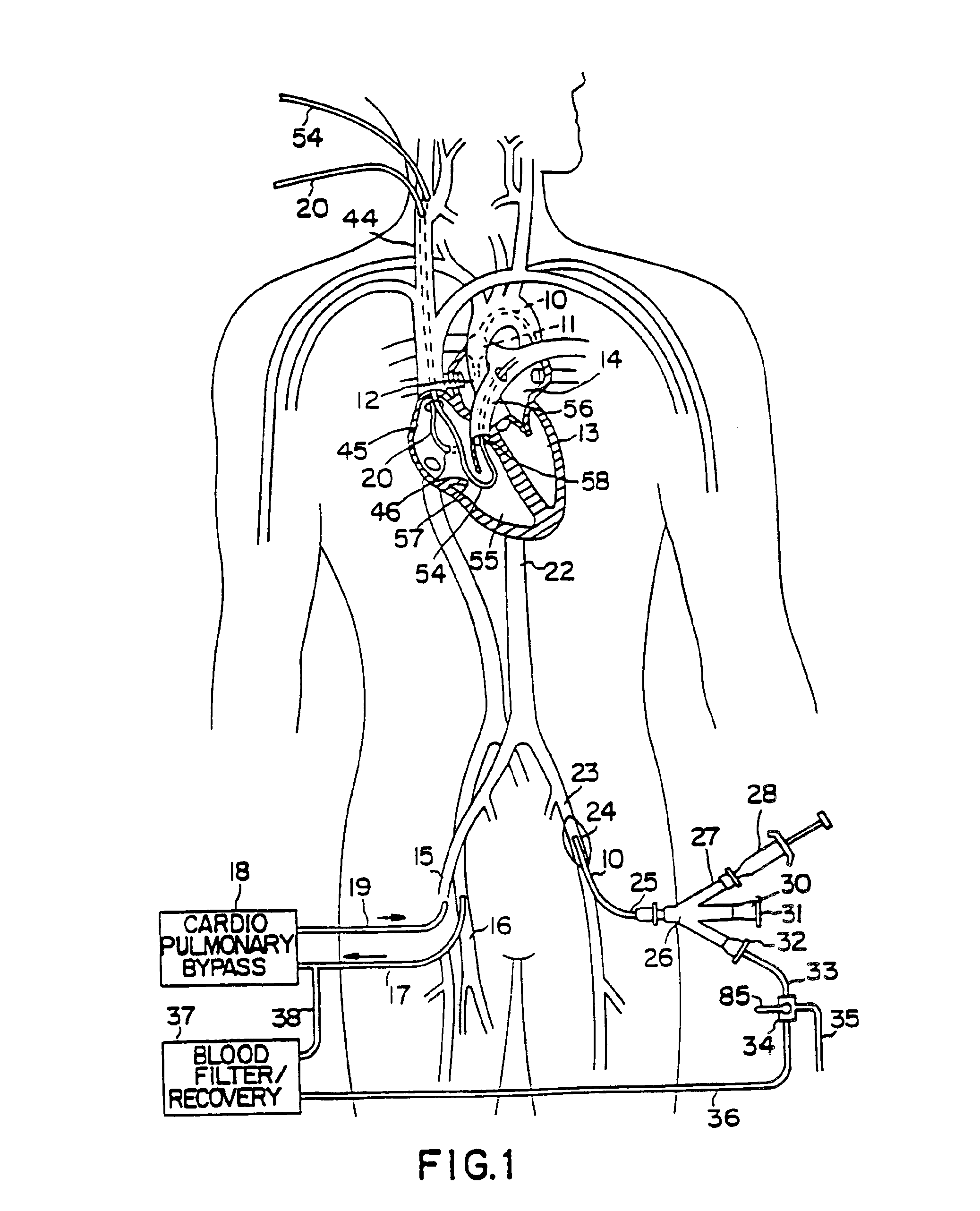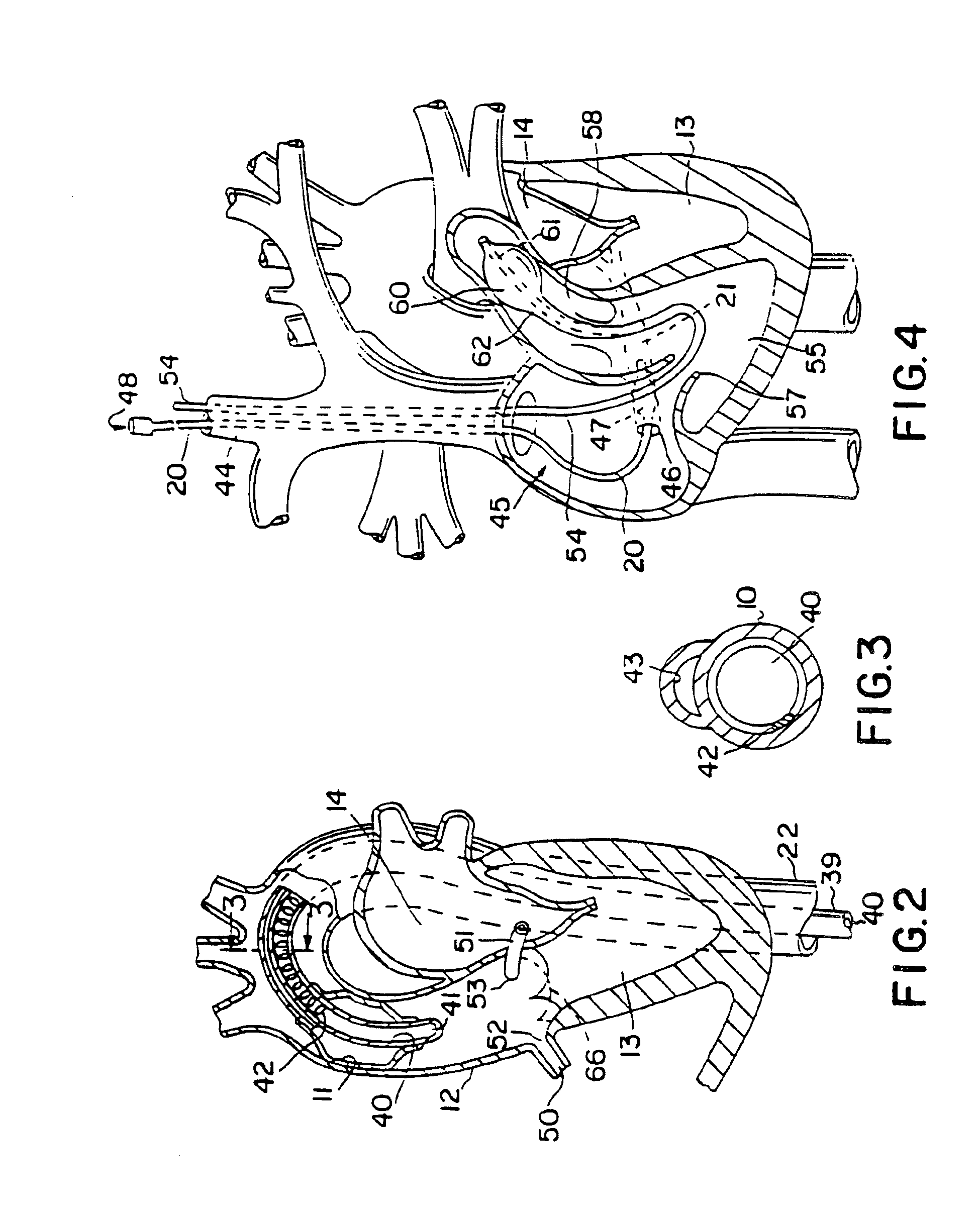System for cardiac procedures
a cardiac procedure and system technology, applied in the field of devices and methods, can solve the problems of significant complications, increased mortality and morbidity for reoperation, and weeks of hospitalization and months of recuperation time, so as to reduce hospitalization and recovery time, reduce mortality and morbidity, and reduce patient suffering
- Summary
- Abstract
- Description
- Claims
- Application Information
AI Technical Summary
Benefits of technology
Problems solved by technology
Method used
Image
Examples
second embodiment
In a second embodiment, illustrated in FIG. 29B, shaft 322 has a dual lumen inner member 350 and a coaxial outer member 352. Inner member 350 includes first inner lumen 329 which receives straightening element 340 and opens at distal opening 331, and a third lumen 354 which has an opening (not shown) at its distal end for measuring pressure in the ascending aorta. Outer member 352 defines a coaxial inflation lumen 356 which, at its distal end, is in communication with the interior of balloon 330. Balloon 330 and outer member 352 may comprise a single integrated extrusion, or balloon 330 may be bonded or otherwise attached to outer member 352 near the distal end of shaft 322 using well-known techniques. Outer member 352 may have an open distal end which communicates with the interior of balloon 330. Alternatively, the distal end of outer member 352 may be closed, for example, by bonding to the exterior of inner member 350, with an inflation orifice 347 provided as shown in FIG. 26A f...
third embodiment
In a third embodiment, illustrated in FIGS. 26B, 28 and 30, shaft 322 has a first inner lumen 329 of large diameter configured to receive various types of surgical instruments, as well as to receive straightening element 340. An inflation lumen 358 extends parallel to first inner lumen 329 and is in communication with the interior of balloon 330 through an inflation orifice 361, shown in FIG. 26B. In this embodiment, shaft 322 may comprise a single extrusion containing inflation lumen 358 and inner lumen 329, or two individual tubes bonded to one another, one tube containing lumen 329 and the other containing inflation lumen 358. With this construction, shaft profile can be minimized while making lumen 329 as large as possible within the confines of the vessels in which the device is positioned. In this embodiment, first inner lumen 329 will have a diameter of at least about 5 mm and preferably about 8 mm. Partitioning device 320 thereby provides a passage of maximum diameter for en...
PUM
 Login to View More
Login to View More Abstract
Description
Claims
Application Information
 Login to View More
Login to View More - R&D
- Intellectual Property
- Life Sciences
- Materials
- Tech Scout
- Unparalleled Data Quality
- Higher Quality Content
- 60% Fewer Hallucinations
Browse by: Latest US Patents, China's latest patents, Technical Efficacy Thesaurus, Application Domain, Technology Topic, Popular Technical Reports.
© 2025 PatSnap. All rights reserved.Legal|Privacy policy|Modern Slavery Act Transparency Statement|Sitemap|About US| Contact US: help@patsnap.com



